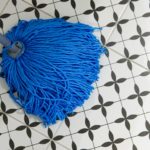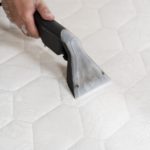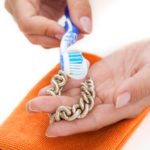Cleaning porcelain tile is relatively easy and straightforward. However, there are a few tips that can help you keep your tiles cleaner for longer and looking pretty all year round.
So, here’s a step-by-step guide to help you keep your porcelain tiles looking clean and beautiful.
Step-by-Step Guide to Cleaning Porcelain Tiles
1. Sweep, dust or vacuum
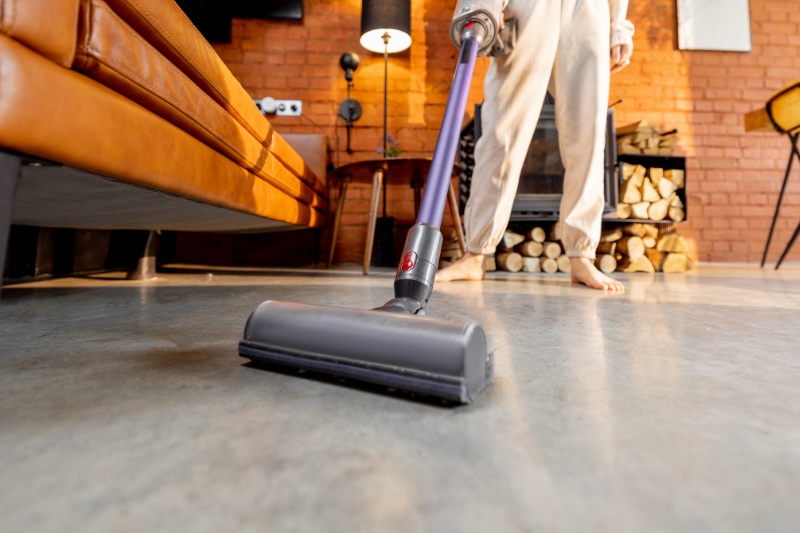
Start by sweeping or vacuuming the floor tiles to remove loose dirt, dust, and debris.
If you are focusing your cleaning efforts on wall tiles, you can simply dust them with a clean, dry microfibre cloth.
This will prevent these particles of dirt from getting in the way while you clean and will prevent excess dirt from scratching the tiles.
2. Prepare a cleaning solution
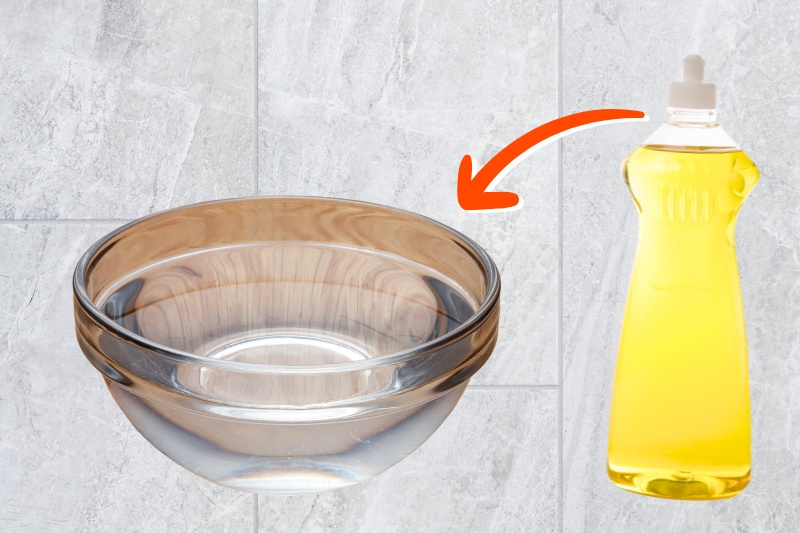
Mix a mild cleaning solution with warm water. You can use a couple of drops of washing-up liquid or a pH-neutral cleaner.
Avoid using harsh chemicals, bleach, or abrasive cleaners, as they can damage the porcelain finish.
3. Test in an inconspicuous area
If you’re using a new-to-you cleaner or a homemade solution, it’s a good idea to test it in a small inconspicuous area first to ensure it won’t cause any discolouration or damage.
4. Mop the tiles
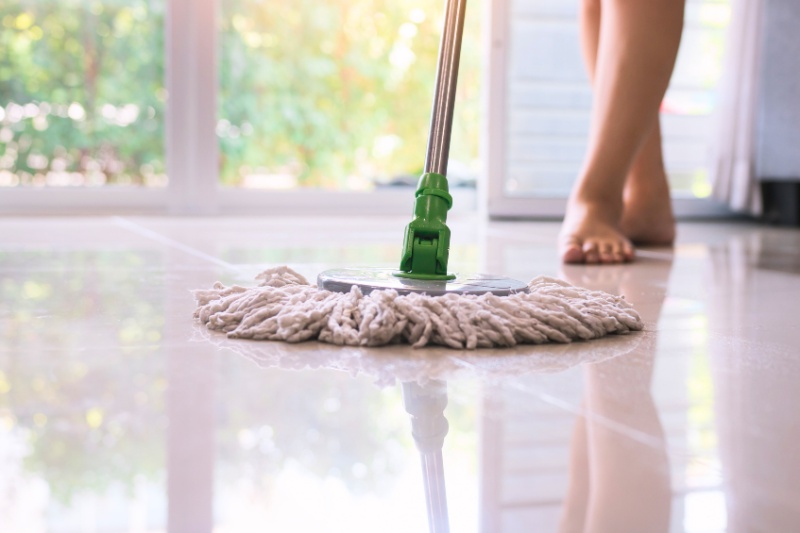
Use a soft mop or microfibre cloth dampened with the cleaning solution to mop the porcelain tiles.
There’s no need to use a lot of water, as it can seep into the grout lines and cause them to deteriorate over time.
Wring out the mop or cloth thoroughly before using it on the tiles. Clean the mop and the microfibre cloth as you go.
There are a couple of cleaning techniques that you can use to clean porcelain tiles; the choice is up to you. You can either focus on each individual tile using small circular motions.
Using small motions is ideal if there is a lot of dirt built up. If there the dirt isn’t too bad, a larger circular motion covering a bigger area will get a large portion of the dirt off of the tiles, and you can then focus on the more stubborn areas.
5. Tackle stubborn areas
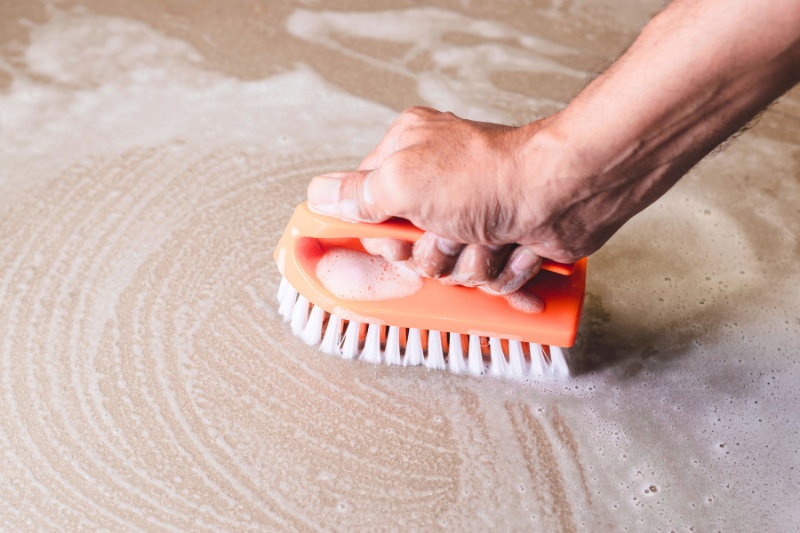
For stubborn stains or grime, you can use a non-abrasive nylon brush (for smaller areas, a soft toothbrush works perfectly) or a soft sponge to scrub the affected areas gently.
Avoid using abrasive materials that could scratch the tile surface. It is better to move around from one stubborn area to another, leaving them to soak up the cleaning solution. This will quickly remove the stubborn dirt and make the tiles look fantastic again.
6. Rinse thoroughly
After cleaning, rinse the porcelain tiles with clean water to remove any remaining soap or residue. This step is essential to prevent any dulling, water residue, or sticky feeling on the tiles.
7. Dry the surface
Use a clean, dry microfibre cloth or towel to wipe down the tiles and remove excess water. This further prevents water spots and promotes a streak-free finish.
8. Grout cleaning
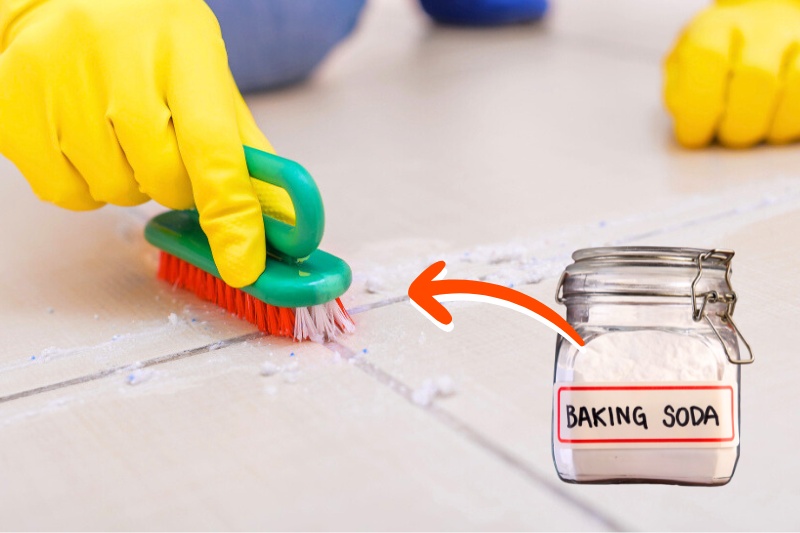
For dirt in the grout lines, it is time to bring back our old friend bicarbonate of soda. Mix up bicarb and water into a thick paste and scrub the grout lines carefully.
Try to avoid the tiles as much as possible, as the bicarb does act as an abrasive in this application.
Use a toothbrush to get into all the cracks, and you’ll see beautifully white grout lines in no time. Give the grout lines a rinse with water, and they will look as good as new.
Things to Avoid When Cleaning Porcelain Tiles

To prevent potential damage to your tiles, avoid heavy-duty scrub brushes, steel wool, abrasive pads, and harsh chemicals.
Also, be careful with metal objects or furniture with sharp edges that could scratch the tile. Avoid using vinegar or acidic cleaners on the grout, as they can damage it.
In Conclusion
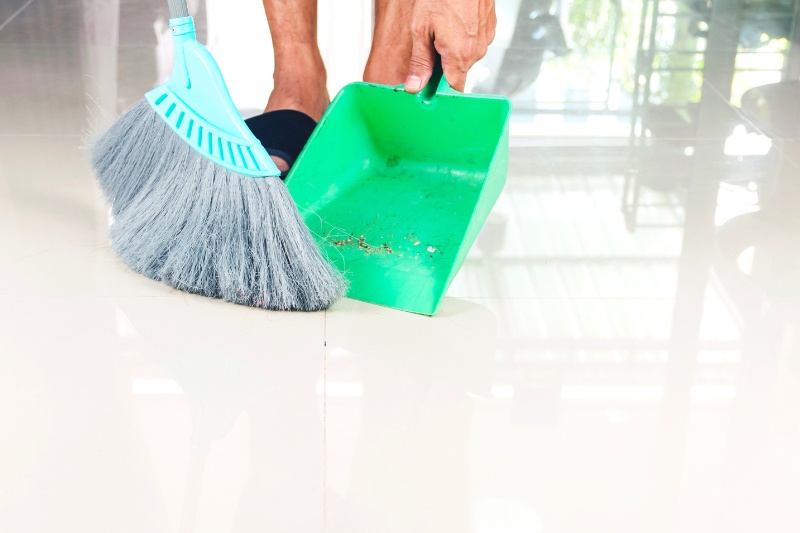
So, that’s how to clean your porcelain tiles. The method above works great for tiles in any condition; you may just need to put in a bit of elbow grease if the dirt has built up quite a bit.
However, with regular cleaning, you can maintain the beauty and longevity of your porcelain tiles by following the step-by-step guide above every week or so.
Why not take a look at the other many cleaning uses for bicarbonate of soda while you’re here? We are big fans of bicarb at In The Wash as it can save the day in so many cleaning applications, and if you pair it with white vinegar, they create one of the best cleaning solutions for all around the home.

In The Wash is your guide to the best laundry and cleaning products, tips and tricks. Our mission is to solve the UK’s cleaning and laundry dilemmas!

